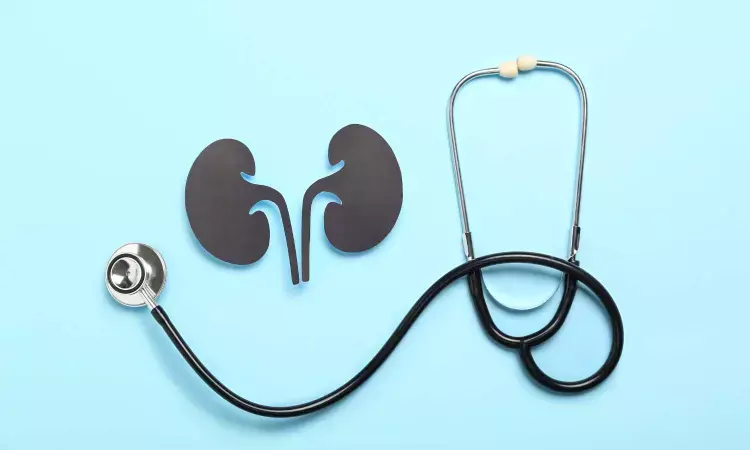- Home
- Medical news & Guidelines
- Anesthesiology
- Cardiology and CTVS
- Critical Care
- Dentistry
- Dermatology
- Diabetes and Endocrinology
- ENT
- Gastroenterology
- Medicine
- Nephrology
- Neurology
- Obstretics-Gynaecology
- Oncology
- Ophthalmology
- Orthopaedics
- Pediatrics-Neonatology
- Psychiatry
- Pulmonology
- Radiology
- Surgery
- Urology
- Laboratory Medicine
- Diet
- Nursing
- Paramedical
- Physiotherapy
- Health news
- Fact Check
- Bone Health Fact Check
- Brain Health Fact Check
- Cancer Related Fact Check
- Child Care Fact Check
- Dental and oral health fact check
- Diabetes and metabolic health fact check
- Diet and Nutrition Fact Check
- Eye and ENT Care Fact Check
- Fitness fact check
- Gut health fact check
- Heart health fact check
- Kidney health fact check
- Medical education fact check
- Men's health fact check
- Respiratory fact check
- Skin and hair care fact check
- Vaccine and Immunization fact check
- Women's health fact check
- AYUSH
- State News
- Andaman and Nicobar Islands
- Andhra Pradesh
- Arunachal Pradesh
- Assam
- Bihar
- Chandigarh
- Chattisgarh
- Dadra and Nagar Haveli
- Daman and Diu
- Delhi
- Goa
- Gujarat
- Haryana
- Himachal Pradesh
- Jammu & Kashmir
- Jharkhand
- Karnataka
- Kerala
- Ladakh
- Lakshadweep
- Madhya Pradesh
- Maharashtra
- Manipur
- Meghalaya
- Mizoram
- Nagaland
- Odisha
- Puducherry
- Punjab
- Rajasthan
- Sikkim
- Tamil Nadu
- Telangana
- Tripura
- Uttar Pradesh
- Uttrakhand
- West Bengal
- Medical Education
- Industry
Covert or latent Toxoplasma gondii infection significantly correlated with CKD, reveals research

Covert or latent Toxoplasma gondii infection is significantly correlated with chronic kidney disease, according to research published in BMC Nephrology. Patients with chronic kidney disease are susceptible to acquiring opportunistic parasites due to acquired immunodeficiency caused by uremia.
Therefore, the present case–control study attempted to determine the prevalence of Toxoplasma gondii infection and the associated risk factors among patients with chronic kidney disease undergoing hemodialysis and healthy controls who were registered at the Iranian National Registry Center for Toxoplasmosis in Mazandaran Province, northern Iran.
A total of 212 patients with chronic kidney disease and 200 healthy controls were enrolled in this study. Informed consent and a questionnaire were obtained from all subjects. Blood samples were collected from each participant, and the serum was screened for anti-Toxoplasma antibodies (immunoglobulin G and immunoglobulin M). Polymerase chain reaction assay was performed to detect circulating Toxoplasma gondii in the blood samples of patients and controls using the primer pair targeting the repetitive element gene.
Results indicated that out of 412 participants, 67.92 percent of patients and 15.5 percent of control subjects were positive for anti-Toxoplasma immunoglobulin G, but all participants were negative for anti-Toxoplasma immunoglobulin M. Also, considering polymerase chain reaction assays with the repetitive element target, the prevalence of Toxoplasma gondii infection was 24.1 percent in case subjects, while none of the control subjects tested positive. Among the polymerase chain reaction-positive cases, 34 (66.7 percent) had Toxoplasma immunoglobulin G positivity.
The results from the multiple multinomial logistic regression revealed that the seroprevalence of anti-Toxoplasma gondii immunoglobulin G antibodies in patients with chronic kidney disease was 3.12 times higher than in healthy controls (odds ratio = 3.12; 95 percent confidence interval = 0.43, 14.8; P < 0.001). Also, there was a significant association between the seroprevalence of Toxoplasma gondii infection and age, having a cat at home, and the level of glomerular filtration rate in these patients. The findings demonstrate a highly significant association between latent Toxoplasma gondii infection and chronic kidney disease, mostly in the late stages. Thus, regular screening for Toxoplasma gondii infection in these patients is strongly recommended to prevent the reactivation of latent infections.
A combination of serological screening, chemoprophylaxis, and polymerase chain reaction follow-up for patients at risk of reactivation should effectively reduce the likelihood of latent infection reactivation.
Reference:
Montazeri, M., Fakhar, M., Sedighi, O. et al. Latent Toxoplasma gondii infection and associated risk factors among patients with chronic kidney disease: a registry-based study. BMC Nephrol 26, 163 (2025). https://doi.org/10.1186/s12882-025-04079-2
Dr. Shravani Dali has completed her BDS from Pravara institute of medical sciences, loni. Following which she extensively worked in the healthcare sector for 2+ years. She has been actively involved in writing blogs in field of health and wellness. Currently she is pursuing her Masters of public health-health administration from Tata institute of social sciences. She can be contacted at editorial@medicaldialogues.in.
Dr Kamal Kant Kohli-MBBS, DTCD- a chest specialist with more than 30 years of practice and a flair for writing clinical articles, Dr Kamal Kant Kohli joined Medical Dialogues as a Chief Editor of Medical News. Besides writing articles, as an editor, he proofreads and verifies all the medical content published on Medical Dialogues including those coming from journals, studies,medical conferences,guidelines etc. Email: drkohli@medicaldialogues.in. Contact no. 011-43720751


